how does a cooling tower work youtube
This video explains how cooling towers work and the working principle behind all wet type cooling towers. Some chiller designs can allow for cooling.
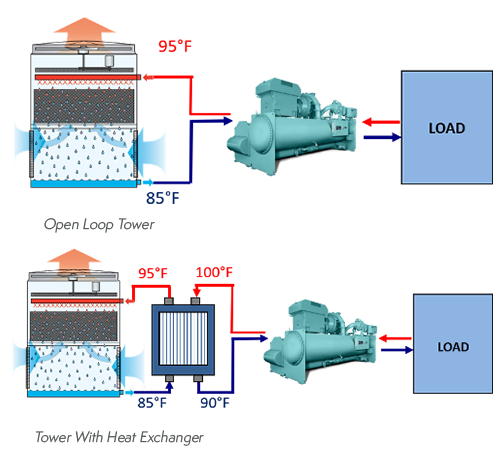
The Closed Loop Advantage Evapco
The colder water gets pumped back to the processequipment that absorbs heat or the condenser.

. The fan pulls cool ambient air in through the filters at the base and pushes it out the top of the cooling tower taking heat and moisture with it. The basic operation is. The air has been pulled using a motor-driven electrical.
Cooling towers operate through a heat transfer process that efficiently cools the already cycled water to be reused. The forced evaporation of a minimum quantity of water compared to the main mass takes place by the dissipation of heat from the mass itself. It then widens slightly to aid in mixing the moisture laden air into.
Typical low temperature coolant temperatures during summer conditions can rarely go below 75F-80F while using a cooling tower. Drive Belt and Drive Motor. The water is flashed to air as it passes throughout the cooling tower.
Evaporative cooling towers or cooling towers are devices which make use of a natural principle which is as simple as it is effective. Specifically how do cooling towers work as a heat removal device that utilizes water as a heat transfer medium. Just like nuclear power plants these cooling.
Though most people are familiar with the large. The water on the skin quickly evaporates and pulls the heat from the body. Simply put cooling towers are large boxes equipped to maximize the evaporation of water.
The air is being pulled by an motor-driven electric cooling tower fan. A cooling tower is a heat removal device that uses water to transfer process waste heat into the atmosphere. When a process or machine part begins to heat up.
Beneath the fill cool air is entered in and promptly. A cooling tower gets rid of unwanted heat from chillers. The resulting colder water goes back to the equipment that absorbs heat or the condenser.
The cold air drawn in through the bottom hits the exchange surface cooling down the hot water which then drops into the basin at the bottom of the cooling tower. The mixing of warm water and cooler. The simplest method of spinning the fan blades.
When the air and water come together a small volume of water evaporates creating an action of cooling. Back to FAQs Definitions. We take an overview of each main component with real world examples colour illustrations and 3D models t.
In this process small volumes of water evaporate lowering the temperature of the water circulating throughout the tower. In a chiller plant this water is part of the condenser water loop and is responsible for removing heat from the chiller and rejecting it to the outside atmosphere. The circulating water is then cooled by means of evaporation or direct heat transfer to atmospheric air.
This is an ideal video for HVAC Power Plant Engine. There are a few kinds of cooling towers but most work using evaporation and are very energy efficient. Likewise an industrial cooling tower operates on the principle of removing heat from water by evaporating a small portion of water that is recirculated through the unit.
What they are and where they are useful. Cooling towers are constructed for plant cooling and to protect aquatic environments. Cooling towers are specialized heat exchangers but instead of the usual conduction - convection heat transfer of shell and tube heat exchangers it generates cooling by bringing water and air into contact.
This cooling is achieved through evaporative cooling and. To do this it pumps water to the top of the tower and moves down flow plates to the basin. Cooling towers are heat rejection devices capable of removing excess heat to the atmosphere by decreasing the temperature of a water stream.
It is estimated that around 2 of the water which. Wet cooling towers use water to cool machinery that heats up hence the wet part of the name and these towers use the natural process of evaporation to cool machinery. It allows a little bit of water to cool and evaporate into a moving air stream.
We then feel the cooling sensation taking over. A cooling tower is a device that rejects heat to the atmosphere by cooling a working fluid typically water to a lower temperature. Chillers can achieve typical temperatures from 70F and below all year.
These towers rely on an exchange of heat between the machinery the water in the tower and the air passing through the tower. Plastic sheets inside the tower create a large surface area ready for evaporation. The water is exposed to air as it flows throughout the cooling tower.
This design is actually based on the condensers created for. Cooling towers are usually found on the top of. Cooling tower spouts are managed to diffuse the water over the fill media that reduces the flow of water and reveals the maximum volume of water covering area desirable for the safest air-water connection.
The shape of most cooling towers is a hyperboloid. Heat is removed from the water circulating in the system by evaporating a small portion of it. This type of heat removal is produced through evaporation.
For instance many industrial processes produce waste heat that is transferred to circulating water via heat exchangers. The mass therefore cools down. Heat is removed from the water supply through evaporation.
In this video we look at how a cooling tower works. The heat produced by the water stream is transferred to the air. The job of cooling towers is to transfer unwanted heat to the atmosphere.
Cooling towers can also work in a similar manner with the condensers of heat pumps. Cooling tower temperatures vary based on local wet bulb conditions and the ambient air temperature. Lets first look at the parts inside a cooling tower.
Parts Of A Cooling Tower. This water is then funnelled back into the industrial systemindustrial process from where it came and the whole cycle begins again. The hot water from the chiller will enter near the top of the cooling tower and be sprayed across the wide surface area of the heat transfer surface called the fill.
Cooling towers are special heat exchangers that let water and air come in contact with each other to lower the temperature of hot water. They are built this way because the broad base allows for greater area to encourage evaporation then narrows to increase air flow velocity.

Atmospheric Cooling Towers Youtube
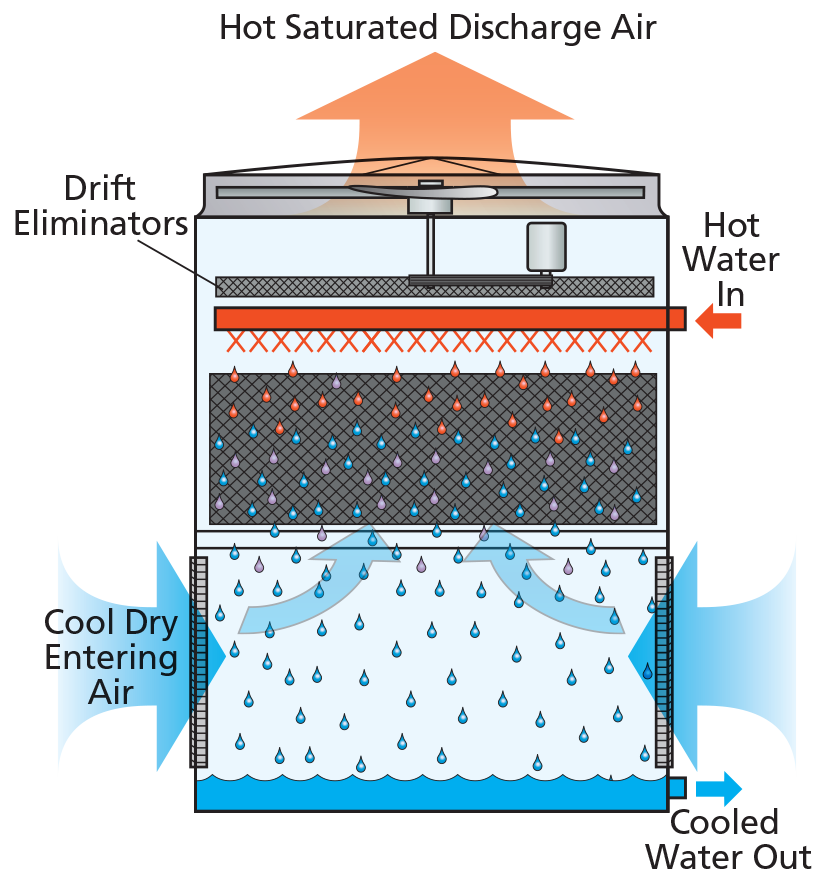
Evaporative Cooling 101 Evapco

Cooling Tower What It Is How Cooling Tower Works Youtube Cooling Tower Tower Science And Technology
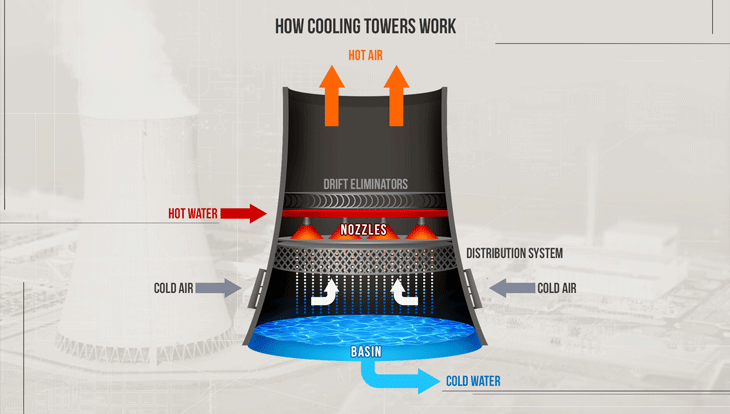
How Cooling Towers Work Diagram Pictures Principles
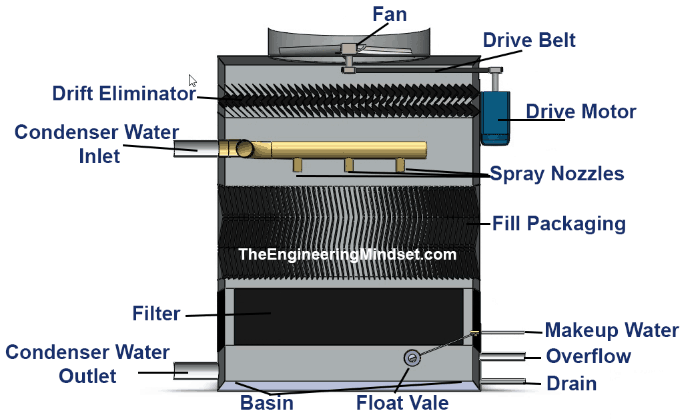
Parts Of A Cooling Tower The Engineering Mindset
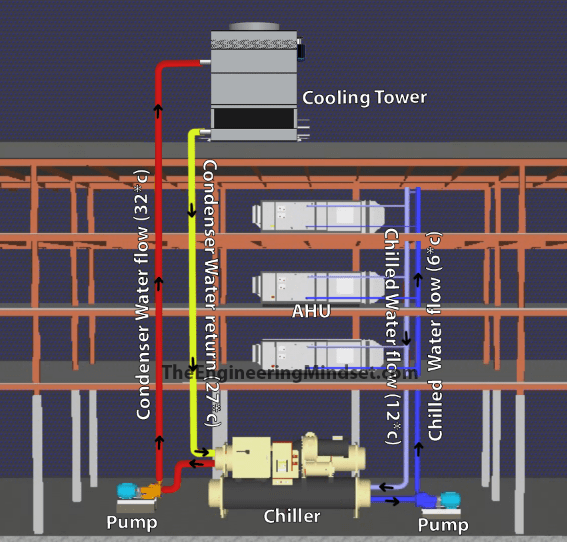
How Cooling Towers Work The Engineering Mindset

Cooling Towers Explained How Does A Cooling Tower Work Engineeringclicks
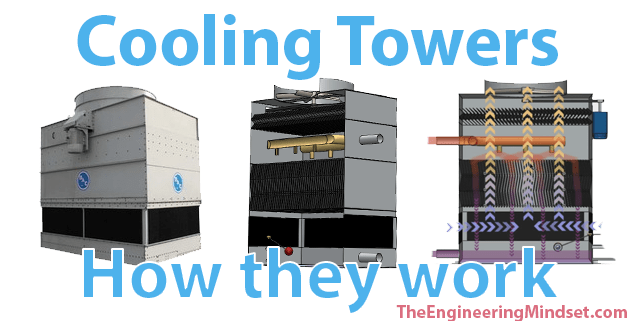
How Cooling Towers Work The Engineering Mindset

Cooling Towers Explained How Does A Cooling Tower Work Engineeringclicks

Why Does A Cooling Tower Have Curved Sides Quora

Cooling Tower How Does A Cooling Tower Works In The Cold Season Youtube

Cooling Tower Basic Operation Youtube

Natural Draft Cooling Tower Explained Savree
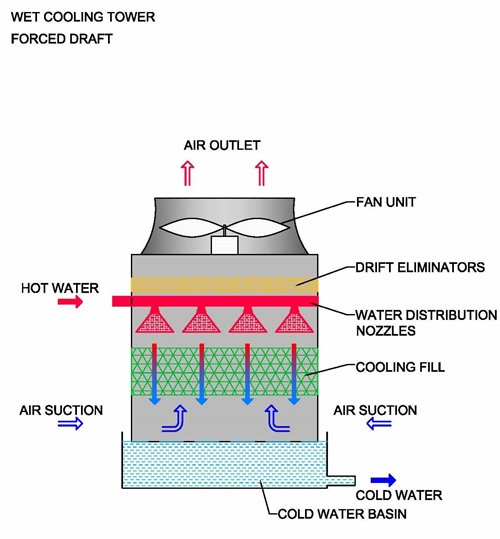
How Cooling Towers Work Diagram Pictures Principles
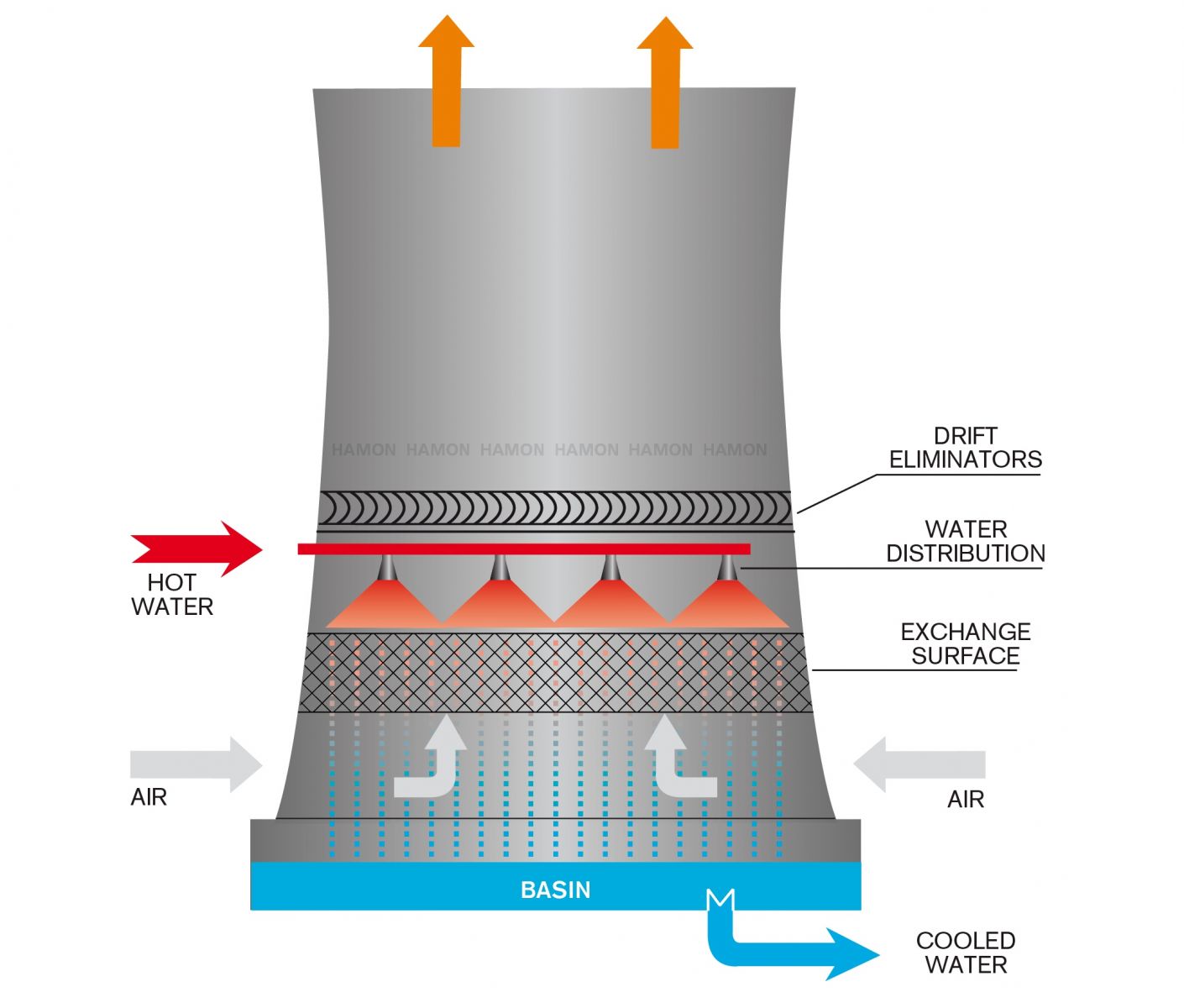
How Cooling Towers Work Diagram Pictures Principles
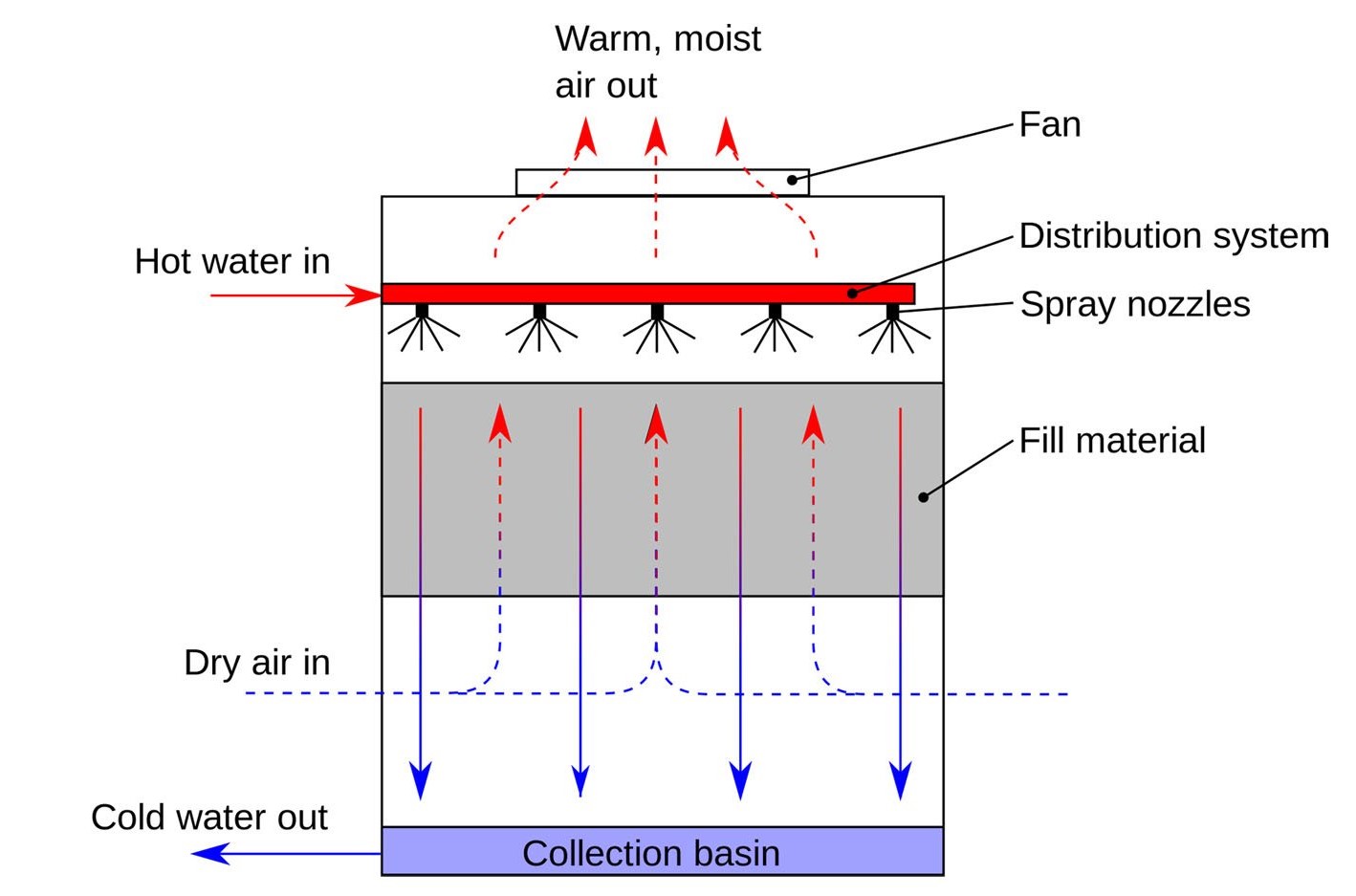
What Is A Cooling Tower What Is It S Purpose Delta Cooling

Understand The Importance Of Correct Cooling Tower Fill Chemical Processing

